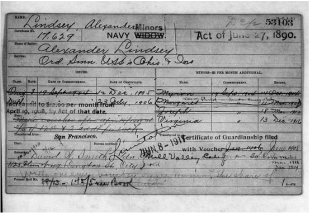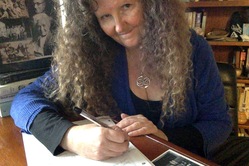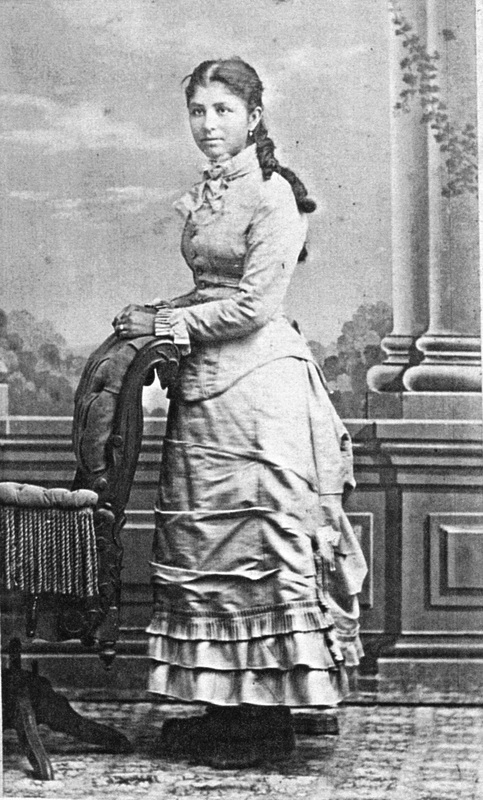
I was so relieved to finally find her mother, my great-grandma Josie's obituary from October of 1907 and see that Margaret, who I had come to think of as my Aunt Maggie, was listed as a surviving child. She was 13. I cried with joy that she hadn't been burned to death in the rubble of her neighborhood. Then I realized that she must have been the step-daughter run out by my great-grandpa David. I could only imagine the possibilities for a 13 year old orphan among thousands of poor working class people still in refugee camps a year and a half after losing their whole life in the Earthquake and Fire. I kept looking for evidence of her, but assumed the worst, that she ended up on the street, that she ended up dead with no record like so many poor young girls. I found myself mourning my Aunt Maggie, someone who I hadn't even known existed.
Then yesterday I stumbled on the photo image of a small, tattered, and much hand-edited document indicating who was to receive the Union Navy pension of my great-grandma Josie's first husband, Alex Lindsey. My great-grandpa David (the same one who had run Aunt Maggie out and had all the minor children, including his own two, taken away from him) had returned to the court in 1908 to make sure they knew that his step-children were eligible for their father's pension. Scrawled across her name on that tattered piece of paper were the words "now Lind."
From that tiny clue I have now found more about Margaret Lindsey, "now Lind." At 13 years old, just days before her mother died in October of 1907, Aunt Maggie married Edward Lind, who was ten years her senior. They had five children: Edward, Evelyn, Albert, Myrtle, and Virginia. They lived in San Francisco, then Seattle, and seemed to settle in Los Angeles. During The Depression she worked as a power operator at a flag factory. By the 1940 census she is listed as divorced and working as a floor woman in retail services. Her household consisted of herself, her divorced daughter Evelyn Armstrong (who owned her own beauty parlor), her other divorced daughter Myrtle Mueblavauen (oh I love that name!), and Myrtle's three children: Barbara, Roy and Virginia.
Blessings to you Margaret Lindsey, "now Lind," my strong and resilient Aunt Maggie. I am so glad to know you existed and that you didn't die all the horrible deaths I'd feared for you. It sounds like you had one hell of a life and were an amazing woman.



 RSS Feed
RSS Feed